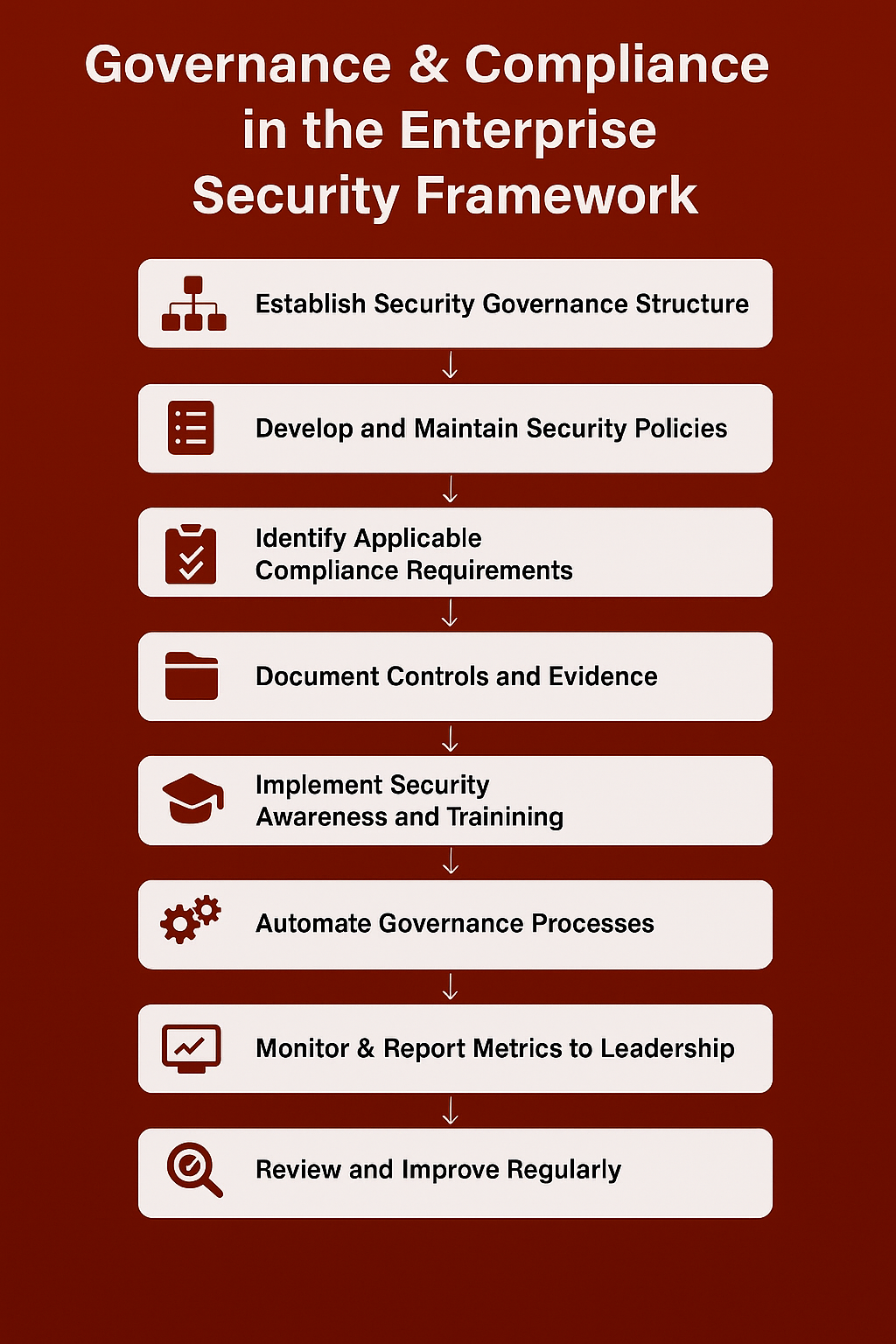
In today’s digital-first world, enterprise security is no longer just about firewalls and incident response. Governance and compliance sit at the heart of a resilient security program. They ensure that policies align with business goals, regulatory obligations are met, and controls are applied consistently across the organization.
This article explores nine essential steps for embedding governance and compliance into a modern enterprise security framework.

1. Establish a Security Governance Structure
Every strong program starts with clear ownership. Define roles and responsibilities for cybersecurity leadership:
2. Develop and Maintain Security Policies
Policies are the rulebook for enterprise security. Core policies should include:
Store these policies in a central repository, review them annually, and update as business or regulatory requirements evolve.
3. Identify Applicable Compliance Requirements
Every industry has unique obligations. Determine which laws, regulations, and frameworks apply to your business (e.g., GDPR, HIPAA, NIST, ISO 27001). Then, map requirements directly to internal policies and controls to avoid duplication and gaps.
4. Conduct Risk & Compliance Assessments
Regular assessments are key to staying ahead of vulnerabilities. Use a combination of:
5. Document Controls and Evidence
Compliance isn’t just about doing the right thing—it’s about proving it. Maintain documentation for:
This evidence supports both internal governance and external audits.
6. Implement Security Awareness and Training
People are often the weakest link. Strengthen them with:
When employees understand their part in compliance, the entire framework becomes stronger.
7. Automate Governance Processes
Manual compliance is time-consuming and error-prone. Automate wherever possible:
GRC platforms and integrations streamline governance, freeing up teams to focus on higher-value risk management.
8. Monitor & Report Metrics to Leadership
Executives and boards want visibility into risk posture. Track and report metrics such as:
Use dashboards and scorecards to translate complex data into business-focused insights.
9. Review and Improve Regularly
The threat landscape changes daily, and regulations evolve constantly. Establish a culture of continuous improvement by:
Final Thoughts
Governance and compliance are not one-time checkboxes—they are living practices that scale with your business. By building a structured, measurable, and automated approach, organizations can reduce risk, meet regulatory obligations, and build long-term trust with customers and stakeholders.